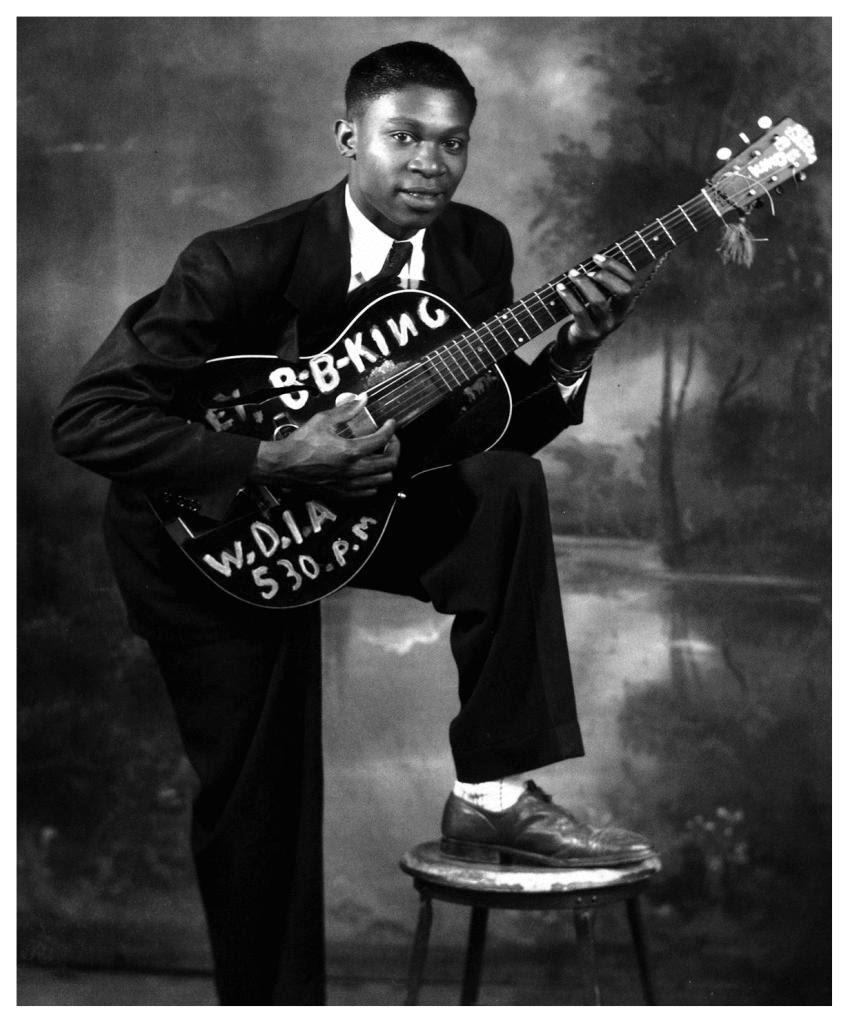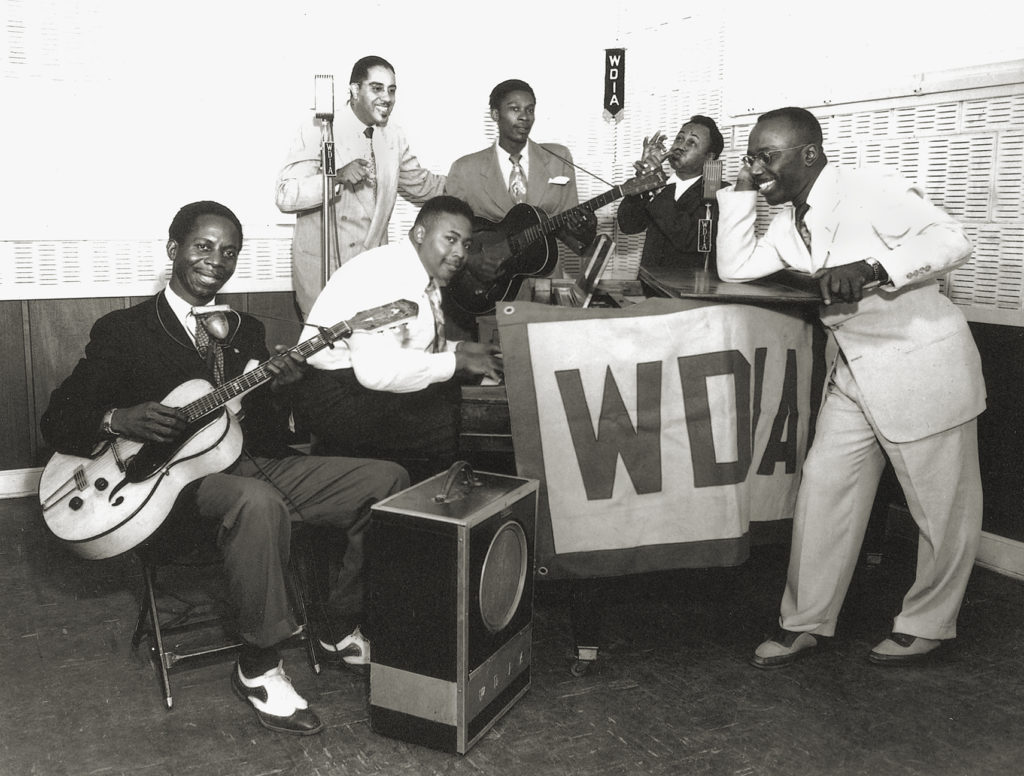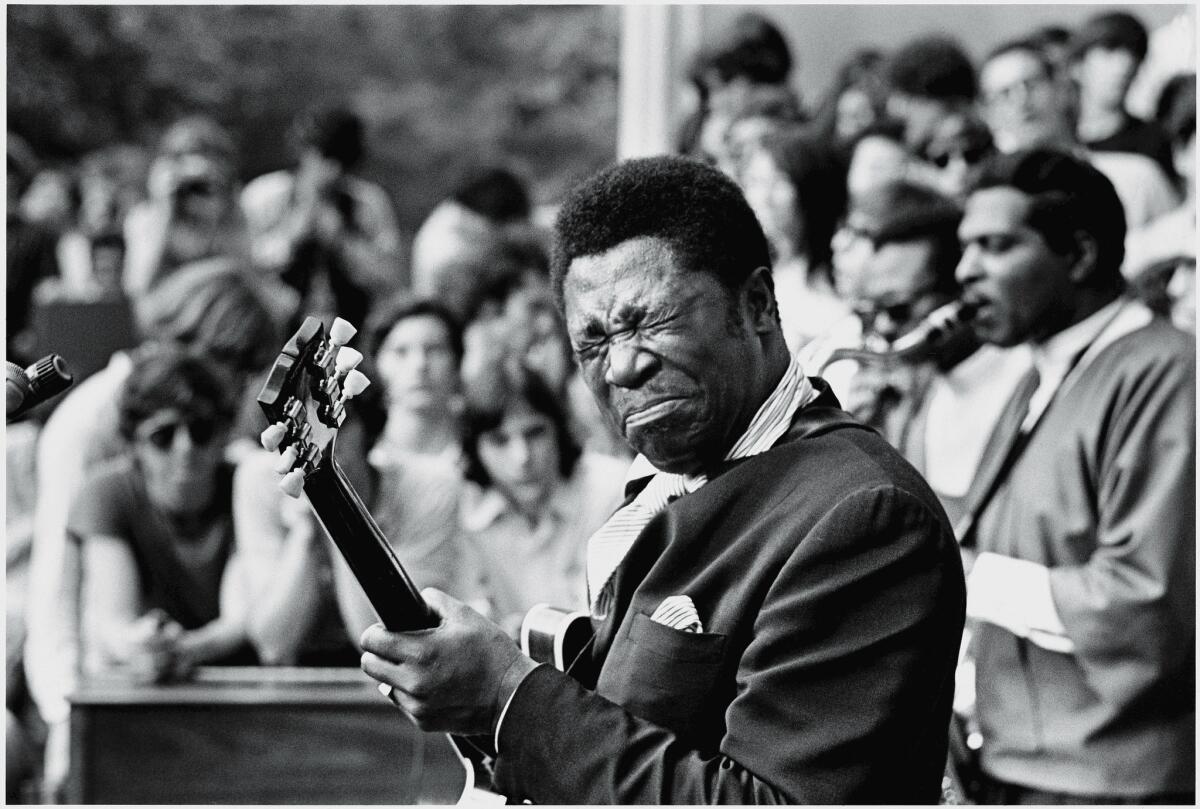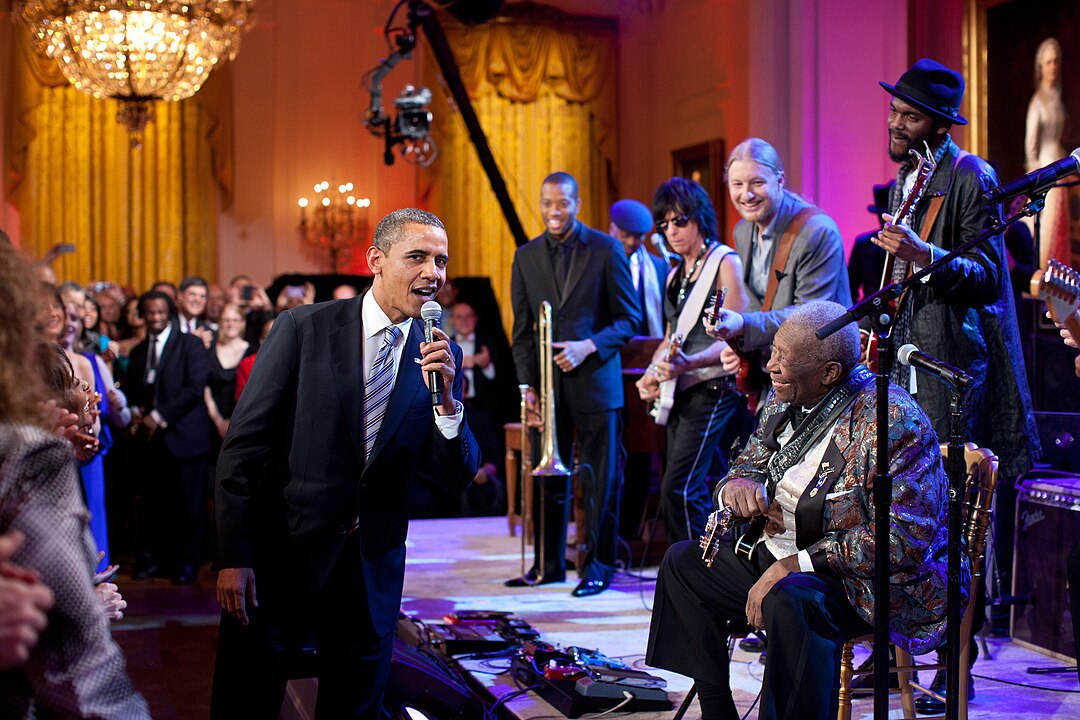B.B. King, a child of Mississippi and a Blues legend, transcended his rural roots to become a global icon. Through daring collaborations and a unique playing style, he carried the voice of the Blues to the world’s stages, transforming every note into a universal emotion. Here’s a look back at the extraordinary journey of the “King of the Blues.”
Born on September 16, 1925, in rural Mississippi, Riley B. King—later known as B.B. King—personified the rise of the Blues from humble beginnings to the world’s most prestigious stages.
Raised amidst the harsh world of Southern plantations, he grew up balancing farm work with gospel singing, before revolutionizing popular music in the 20th century.
More than just a virtuoso guitarist, B.B. King crafted a unique aesthetic defined by the emotional power of his playing and the deep resonance of his voice.
Through his collaborations, innovations, and unquenchable musical curiosity, he became one of the founding fathers of modern Blues—a major influence on rock, jazz, and soul.
I. Origins: Blues, church, and early struggles

A child of the rural south
Born in 1925 in Itta Bena, in the Mississippi Delta, Riley B. King grew up in a rural America marked by racial segregation and extreme poverty.
Orphaned of his father at a young age, he was entrusted to his maternal grandmother after his mother remarried and passed away prematurely.
Like many Black children in the Deep South, his first encounter with music was in the Baptist church in Kilmichael.
There, within the parish choirs, he discovered the spiritual power of gospel, where collective singing became a form of expression and resistance in the face of daily injustice.
These early experiences deeply shaped his style: a blend of religious fervor, painful lament, and vibrant hope.
At age twelve, he acquired his first guitar for a few dollars—often described as a treasure as precious as a family heirloom.
He soon joined the Famous St. John’s Quartet, touring rural churches and appearing on local radio shows that pioneered the broadcast of Black music.
Yet music remained secondary: to survive, he worked hard as a tractor driver on plantations, living the experience shared by millions of African Americans trapped in a near-feudal economic system.
Memphis: The decisive launchpad

In the 1940s, Riley King decided to try his luck in Memphis, a city teeming with artistic energy.
A crossroads between the rural traditions of the Delta and modern urban influences, Memphis was a living lab for Blues, R&B, and soon Rock ’n’ Roll.
Thanks to his vocal talent and natural charisma, he landed a job at WDIA radio—the first U.S. station to primarily feature African American artists.
He hosted a show sponsored by a tonic called “Pepticon,” aimed at a Black audience, under a slot named “King’s Spot.”
It was behind the mic that his nickname was born: from Beale Street Blues Boy (after the iconic street in Memphis), he became B.B. King—a moniker that would stick for life.
In Memphis, B.B. also discovered electric Blues through T-Bone Walker, an innovative guitarist from the Texas scene.
T-Bone wasn’t just a masterful technician—he introduced amplified guitar to the Blues, transforming its emotional and sonic impact.
Inspired, B.B. chose the electric guitar as his instrument of choice, an extension of his inner voice.
It was during this formative period that Riley B. King established the core pillars of his musical identity:
- The emotional intensity of gospel
- The improvisational freedom of the Blues
- The expressive power of the electric guitar
With these foundations laid, the legend of B.B. King began in earnest.
II. The rise: From local success to global recognition

Early breakthroughs and artistic structure
Despite his obvious talent, B.B. King’s early recording career was modest.
Discovered by Sam Phillips, future founder of Sun Records, he began recording with small local labels like Bullet Records and later RPM Records.
His early singles, though technically solid, struggled in the crowded Southern music scene.
Refusing to be discouraged, B.B. pursued a bold strategy:
- He formed a full orchestra of ten musicians—a rarity for a young Blues artist.
- The band was led by Millard Lee, a respected pianist and arranger, who brought structure and harmonic richness to the group’s sound.
This blend of raw Delta Blues and jazz-like sophistication became the hallmark of the “B.B. King sound.”
A turning point came in 1952 with “3 O’Clock Blues,” recorded under rudimentary conditions in Memphis.
The slow, poignant track soared to number one on the Billboard R&B chart, where it remained for weeks.
The success was explosive: B.B. embarked on a national tour, performing in clubs, Black community halls, and major venues on the “Chitlin’ Circuit” (venues that welcomed Black performers during segregation).
Blues—still viewed at the time as a regional or marginal genre—began to win over mainstream American audiences.
Thanks to his accessible style, charisma, and innovative guitar playing, B.B. King emerged as one of the genre’s brightest ambassadors.
The rise of a legend
In 1956, at the peak of his success in the Black music market, B.B. King launched his own label: Blues Boys Kingdom, based in Memphis.
A rare move at the time, this allowed him to produce his own music and support young Black talent outside the white-dominated record industry.
At the same time, he signed a major contract with ABC-Paramount Records, granting him access to better production resources and national exposure.
The pinnacle of this period came in 1964 with the recording of Live at the Regal, at Chicago’s Regal Theater.
Considered one of the greatest live Blues albums ever, it captured the energy, emotion, and audience connection of B.B. King’s performances.
His percussive guitar playing, vibrant solos, and poignant vocals achieved a level of artistry that would inspire generations.
By the late 1960s, as white audiences embraced the Blues, the American music scene changed dramatically.
The British Blues Boom, led by bands like The Rolling Stones and Cream, honored Black pioneers.
During their 1969 U.S. tour, The Rolling Stones invited B.B. King to open for them, exposing him to vast new audiences, mostly young and white.
From then on, B.B. King transcended racial and generational barriers, becoming the universal icon of the Blues.
His influence extended not only to Blues musicians, but also to those in rock, funk, and even pop.
III. Legacy, collaborations, and longevity

Constant reinvention
Unlike many of his contemporaries, B.B. King refused to be trapped in a nostalgic image of the Blues.
He understood early on that for the genre to survive, it had to evolve without betraying its roots.
In the 1970s and beyond, he embraced unexpected collaborations:
- He performed with white rockers like Eric Clapton, Gary Moore, and The Rolling Stones, expanding the Blues’ reach beyond traditional Black audiences.
- In 1988, his duet with U2 on “When Love Comes to Town” introduced his music to a new generation drawn to the fusion of rock, pop, and Blues tradition.
B.B. King became a symbol of transmission—passing the torch while remaining a living authority.
When he shared the stage with Clapton on Riding with the King (2000), it was both a tribute to the past and a revival of the Blues.
His style remained unmistakable:
- Lucille, his beloved guitar (which he famously named after a dancehall fire incident), produced a silky tone where every note “sang” more than it echoed.
- He favored pure expressiveness over flashy virtuosity: his signature bends, wide vibratos, and graceful restraint made every solo emotionally resonant—almost vocal.
His warm, gravelly voice—seasoned by age—conveyed pain, hope, or resignation with rare sincerity.
An icon honored in his lifetime
Aware of his status as a living legend, B.B. King embarked on a farewell tour in 2006.
A street was named after him in tribute—a testament to the deep connection between French audiences and this Blues giant.
Yet true to his nomadic spirit, B.B. King never truly left the stage.
Even weakened by diabetes (a disease he battled for two decades), he continued to perform, refusing to succumb to decline.
Each concert became an act of transmission and resilience—a reminder that the Blues is more than a genre: it’s a way of being in the world.
On May 14, 2015, B.B. King passed away peacefully in Las Vegas at the age of 89.
His death sparked a global wave of emotion—from anonymous fans to the greatest contemporary artists—all honoring the immense legacy of a man who turned the pain of a people into a universal musical language.
B.B. King didn’t just popularize the Blues:
- He gave it a human face
- An unmatched emotional depth
- And a universal dignity that continues to inspire every generation
Sources:
- Wald, Elijah, Escaping the Delta: Robert Johnson and the Invention of the Blues, HarperCollins, 2004.
- Guralnick, Peter, Feel Like Going Home: Portraits in Blues and Rock ‘n’ Roll, Back Bay Books, 1999.
- Santelli, Robert, The Big Book of Blues: A Biographical Encyclopedia, Penguin, 2001.
Table of Contents
I. Origins: Blues, Church, and Early Struggles
• A Child of the Rural South
• Memphis: The Decisive Launchpad
II. The Rise: From Local Success to Global Recognition
• Early Breakthroughs and Artistic Structure
• The Rise of a Legend
III. Legacy, Collaborations, and Longevity
• Constant Reinvention
• An Icon Honored in His Lifetime
Sources
